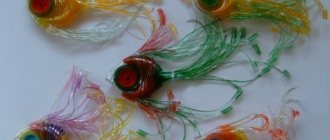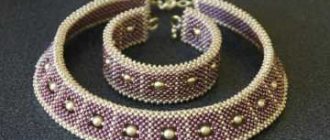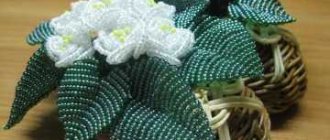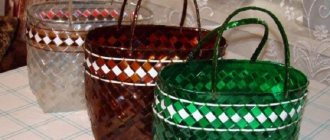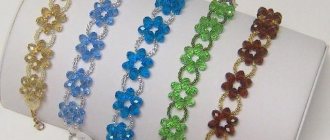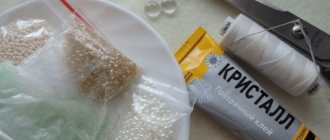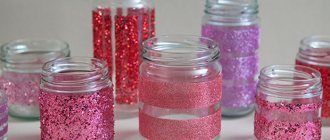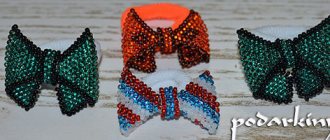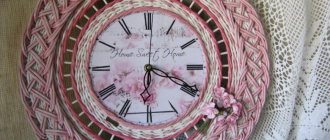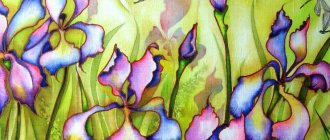The demand for handmade souvenirs is constantly growing. Many choose various techniques for making such things as their hobby, a creative activity for the soul, and for some it also becomes a source of income. If you are interested in the method of making products from paper wicker, but you do not know how and what to paint newspaper tubes for weaving, read the tips and tricks. You will definitely find a method and composition that suits you.
When to paint
If you decide to start making products from paper wicker, then you need to learn not only weaving techniques, but also how and with what to paint newspaper tubes for weaving. If you are using colored newspaper or magazine sheets to roll the blanks, you can leave them undyed. After all, a wicker product will have an interesting surface even without this.
If ordinary black and white newspapers are used, the tubes are often painted to match the color of the natural vine (unsanded), that is, brown or light (as if the bark had been removed from the branches).
There are several coloring options:
- Before weaving.
- After.
- Combined method (applying the main color before and drawing the pattern on the finished product).
Choose the method that is convenient for you and suitable for each specific product.
What is the best way to paint newspaper tubes for weaving?
In fact, there are a huge number of options. Almost any composition that has a color pigment is suitable, but the choice is determined by what shade you want to get and how rich it is. Some compositions make the tubes hard after the paint layer has dried, others make them soft, but have lost their brightness and become faded. Dyes can be used both water- and alcohol-based, as well as powder ones, which are pre-diluted in liquid. So, the list of options is:
- gouache;
- watercolor (fading);
- acrylic paints;
- stain;
- car spray paint;
- iodine solution;
- brilliant green;
- potassium permanganate (potassium permanganate);
- aniline dyes for clothing;
- food colorings;
- mascara;
- ink;
- hair dye.
If the workpieces themselves are supposed to be painted before weaving, a stain is usually used, which interacts well with the paper and, after drying, gives a beautiful brown tint. To increase saturation, you can apply the dye in several layers with preliminary drying of the previous layer.
If you decide to first weave the product and then process it, use acrylic colors or gouache. They are sold in sets, so they are suitable for making a complex pattern on the surface of a wicker basket, box or vase. You can draw an ornament, floral motifs or any other pattern.
It is worth considering that when using any of the proposed options, the newspaper tubes must be varnished to make the product more dense and resistant to moisture. It is better to process a finished basket, since the varnish layer will make the paper hard and not very convenient for weaving.
Weaving from newspapers
- Painting the product
If you weaved from ordinary newspapers, then even after the weaving is completed, the product will still look like waste paper.
Now it's time to start improving its appearance. Several painting options are possible. First way. If you want the product to be darker, I recommend covering it with stain immediately after weaving. I use alcohol or hydroalcohol stains, I try different ones that I find in construction stores. If you use water-based stains, the products will turn out lighter. When choosing a color, you need to take into account that after the stain dries, the product becomes lighter. You can try making the stain yourself.
Photo. Product painted with stain immediately after weaving
However, after varnishing it takes on almost the same color as freshly painted with stain. The stain can be applied with a brush. In this case, there may be unpainted places where it is difficult to reach with a brush. Therefore, I recommend the second method - a sprayer, which is used to moisten the laundry before ironing. Both the first and second methods have both advantages and disadvantages. Painting is faster with a sprayer, but only on the street, you can’t spray it in the house. You can use a brush at home, I just recommend taking a hard brush so that the bristles penetrate between the turns of the weave. After the stain has dried, the product must be primed. After staining, I usually cover it with PVA glue, half diluted with water. This will give the product additional strength. And at the last stage of processing, we cover the product, dried from PVA glue, with acrylic varnish. Depending on how your product will be used, we determine the number of layers of acrylic varnish ourselves. If it will be at home, one layer of acrylic varnish is enough. If you want to further strengthen it, you can coat it one or two more times, making sure to wait until the previous layer of acrylic varnish has dried.
Second way. I prepare the following solution: PVA glue + water + white acrylic paint in approximately equal quantities. We strive for the consistency of liquid sour cream. And with this solution we cover our basket of newspaper tubes with a brush. Here, the strengthening and painting of newspaper letters occurs simultaneously.
Photo. Product primer for strengthening and painting newspaper text
After drying, we get a white basket. If you want it to be bright, add a building color of the desired color to the above solution. Well, if we still strive for natural colors of different shades of wood, then after drying we cover the white basket with stain of the selected shade. The most common colors are rosewood (almost black), dark oak, oak, mahogany, cherry, teak and many others. It happens that, having already purchased and tried to paint with stain, you realize that the color is not what was expected. You can safely mix, experiment, and sometimes pleasant discoveries happen. The photo shows two products coated with Oak stain. Only in the first case (on the left) it was covered with stain immediately after weaving, and then with PVA glue, after drying - with acrylic varnish. In the second case (on the right), after weaving, I primed it with a solution of PVA glue + white acrylic paint + water. Then I added the shade with “Oak” stain and coated it with varnish after drying. The difference is significant!
Photo. Two products painted in different ways
After the stain has been absorbed, we re-coat it. But if we immediately get the desired shade, we coat the product with acrylic varnish. You can try different varnishes and impregnations. I settled on acrylic gloss varnish, it is very convenient to use because it is water-based (less toxic), has a low odor, and dries quickly. After varnishing, I place the basket on a plastic lid or a plastic bag - it’s so easy to remove the product later without damaging the coating. In addition to painting, there are various ways to decorate wickerwork. We will talk about them in the following articles:
- Decoupage.
- Gluing motifs from twisted tubes.
- Decoration with ribbons.
Video master class “How to paint products from newspaper tubes”
| If you liked this material, click on one of the buttons of the social networks where you are registered. We will be very thankful. Thank you!!! Sincerely, Elena Tishchenko. > |
How to paint newspaper tubes for weaving white
If you love exclusive things and want to make a white wicker product in order to apply a pattern on it later, for example, floral motifs, it is better to immediately prepare tubes from thin white paper, office or even cash register tape.
Most likely, you have already decided how and with what to paint newspaper tubes for weaving in different shades. The same paints that have a white color in the palette can be used to produce white blanks. Acrylic paint or primer, water-based emulsion and even gouache will do if you use it in a thick enough creamy consistency.
Dyeing technology
When using the first and second tools, the work happens like this:
- Prepare the composition in any container.
- Place the tubes in one layer on oilcloth.
- Put on gloves and pick up a brush.
- Dip into the composition and apply to the tubes.
- Let one side dry.
- Turn it over.
- Repeat the process on all sides.
You can paint and dry the tubes immediately in a vertical position if you secure them in a solid base (for example, with clothespins along the edges of a jar or glass).
If painting will be done by dipping it into the coloring composition, it is better to make a special container from a bottle, or even better, from a plastic pipe of a suitable length, attaching the bottom hermetically. Pour the composition into such a container and lower the tubes. Do not forget to add the solution, as it will be consumed and the level will drop (unpainted areas may remain).
So, you have learned how to paint newspaper tubes for weaving. Choose your favorite composition and coloring method. Create spectacular souvenirs with your own hands.
Dyeing technology: stages of work
Step-by-step instructions for painting tubes depend on whether the finished work will be painted or blanks.
Universal algorithm:
- Make tubes. Decide on the coloring composition and prepare it.
- Use oilcloth or a large sheet of newspaper. Place the tube on it and paint the workpiece with a brush. Leave to dry completely.
- Pour the coloring composition into a plastic bottle, first cutting off the neck. Lower the newspaper tube for a few seconds to prevent the paper from drying out. Place the pieces on polyethylene to dry completely.
- Weave a basket or other craft. Take a brush and paint with any coloring compound, carefully working the numerous holes.
Note! The dyeing procedure is carried out several times, since it is impossible to immediately achieve the desired shade and uniform layer. Before repeating, wait until the workpiece is completely dry. Otherwise, the tubes will be damaged.
Various dyeing methods
From the information presented above, it becomes clear that the tubes are painted in only two ways - with a brush or by complete immersion in the coloring composition. It is better to use the second method, since it allows you to achieve the desired shade and uniform layer the first time.
Painting with stain
The stain does not need to be diluted with water - just buy a product of a suitable shade. The composition is sold in bottles, which greatly simplifies the procedure. To dye, simply place the tubes through the neck into the bottle and take them out after a few seconds. It is better to repeat the procedure later than to spoil the tubes.
Painting with colors
A primer is used here - it can be in pure form or mixed with a little water. To paint, pour the product into a glass jar and add color drop by drop, achieving the desired shade. Afterwards, the prepared composition is poured into a long deep tray. Place the tubes into it and carefully roll them along the bottom with gloved hands. This ensures an even layer and shade.
How to get white
It is better to immediately use white office paper. But if it is not there, use white acrylic paint and primer. You can use water emulsion or gouache, but provided that it has a thick consistency. The procedure is carried out similarly to that described above - in a long recessed tray.
How to get black
To obtain black color, ink or ink is used. They are not diluted with water, so a lot of coloring composition is required. This will make the tubes uniform and rich black in one procedure.
Recommendations for coloring
To get uniformly colored newspaper tubes, you must not only follow the sequence of actions, but also listen to the recommendations. Experienced craftswomen share the following tips:
- you should work with gloves and a protective mask;
- to add shine to the tubes, you can use liquid glass or varnish - the painted tubes, after complete drying, are completely lowered into the composition for a few seconds;
- It is recommended to add shine after making the craft, since sometimes a basket or box in its original form looks attractive;
- To lower the tubes into the coloring composition, no additional devices are used to hold the workpieces - they must be completely immersed in the liquid.
This is interesting:
Features of weaving a vase from newspaper tubes: simple step-by-step instructions
How to weave a mouse from newspaper tubes: simple weaving patterns
